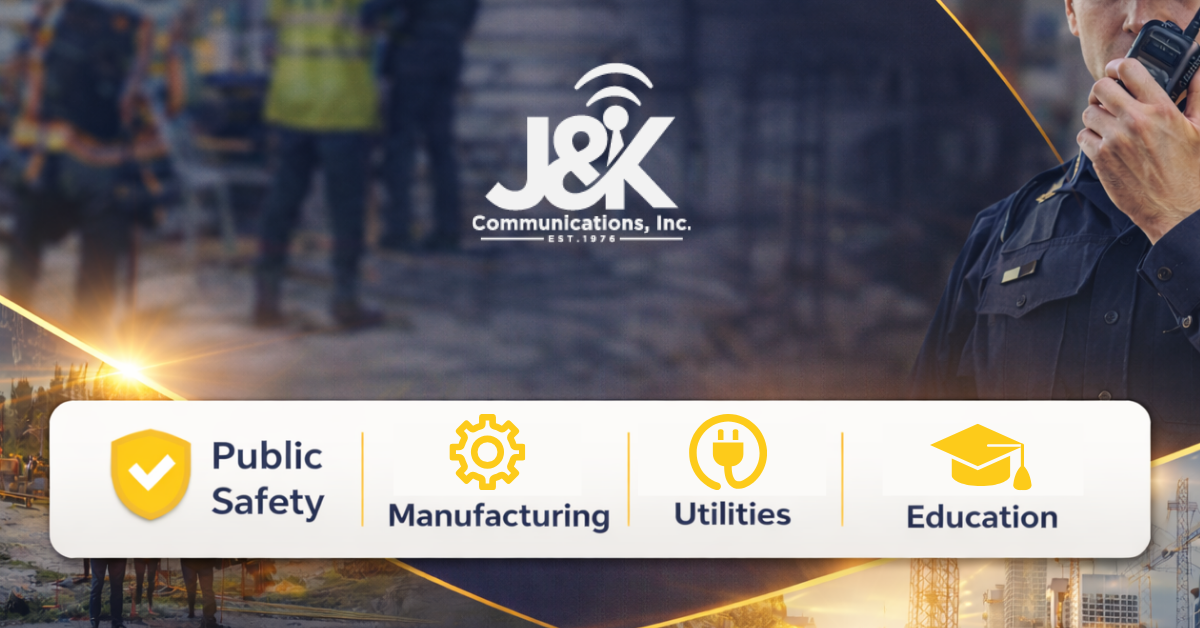Many organizations — fire departments, school districts, factory campuses, utilities, and public-safety agencies — still operate on analog two-way radios. But digital radio systems are now the industry standard. Knowing the differences between analog and digital (NXDN™, DMR, APCO P25) helps you decide when to upgrade and how to migrate with minimal disruption.
Analog Radios
What They Are & Why They’ve Lasted
Analog radios transmit voice by modulating a carrier (typically FM). The approach is simple, familiar, and time-tested — which is why many fleets still rely on it.
Advantages of Analog
- Lower upfront cost for basic handsets and mobiles
- Simplicity — intuitive operation and quick training
- Accessory continuity with older chargers, mics, and batteries
Limitations of Analog
- Static and interference increase as signal weakens
- One conversation per channel (limited capacity)
- Few advanced features — minimal encryption, no data/text, limited GPS
- Declining manufacturer support as platforms age out
Digital Radios
How Digital Works
Digital radios convert voice into data and use error correction, compression, and advanced vocoders to deliver clearer, more consistent audio — even at the edges of coverage.
Key Advantages
- Clearer audio with background-noise reduction near fringe areas
- Better capacity — multiple talk paths per channel (e.g., DMR 2-slot; NXDN narrowband)
- Advanced features — AES/DES encryption, GPS, text/status messaging, OTAP, event logging, and trunking
- Longer battery life from efficient digital duty cycles
- Spectrum efficiency (12.5/6.25 kHz), easier scaling across sites
Common Digital Standards
- NXDN™ (Kenwood NEXEDGE®) — 6.25/12.5 kHz, great spectral efficiency, conventional & trunked
- DMR — 2-slot TDMA, wide vendor ecosystem, Tier II/III options
- P25 (Phase 1/2) — public-safety focused, interoperability and encryption
Trade-Offs to Plan For
- “Digital cliff” effect — audio is clean, then drops once outside coverage
- Higher upfront cost for infrastructure and subscriber units
- System design matters — proper planning, coverage studies, and tuning are essential
Cost & Support
Analog phase-out: Parts and firmware for legacy analog platforms are increasingly scarce, increasing repair times and costs.
Digital total cost of ownership: While radios and repeaters may cost more initially, agencies typically see savings from fewer repairs, better battery performance, higher channel capacity, and scalable features that extend lifecycle value.
Smart migration strategies: Dual-mode (analog + digital) radios, phased rollouts, and reuse of existing sites/towers/antennas can reduce project risk and spread budget impact.
When to Upgrade
- Noisy environments or persistent static, weak signals, and dead zones
- Interoperability needs with mutual-aid partners (P25) or cross-department talkgroups
- Security requirements for encryption and user authentication
- Location and data needs — GPS, text/status, telemetry, and dispatch integration
- Aging analog fleet — discontinued models, rising repair costs
- Grant opportunities for digital migration in public safety and education
Kenwood + J&K: Your Digital Transition Partner
As a Kenwood (NEXEDGE®/NXDN™) dealer, J&K Communications designs, installs, programs, and supports Kenwood digital radio systems across Indiana — including NXDN, DMR, and P25 environments. We align coverage, capacity, and security with your operational needs.
- ✓ Site surveys & predictive coverage studies
- ✓ System design (conventional or trunked), channel planning, licensing support
- ✓ Phased migration (analog + digital coexistence)
- ✓ Programming, installs, optimization, and user training
- ✓ 24/7 support, repairs, and lifecycle maintenance
Analog vs. digital radios isn’t just about new features — it’s about clearer audio, higher capacity, better security, and scalable coverage for mission-critical operations. With the right plan, you can migrate without disrupting daily communications.
Still running on analog? Let’s build a seamless digital migration plan.
Contact J&K Communications to schedule a site survey.
📞 Call us at (260) 244-7975




